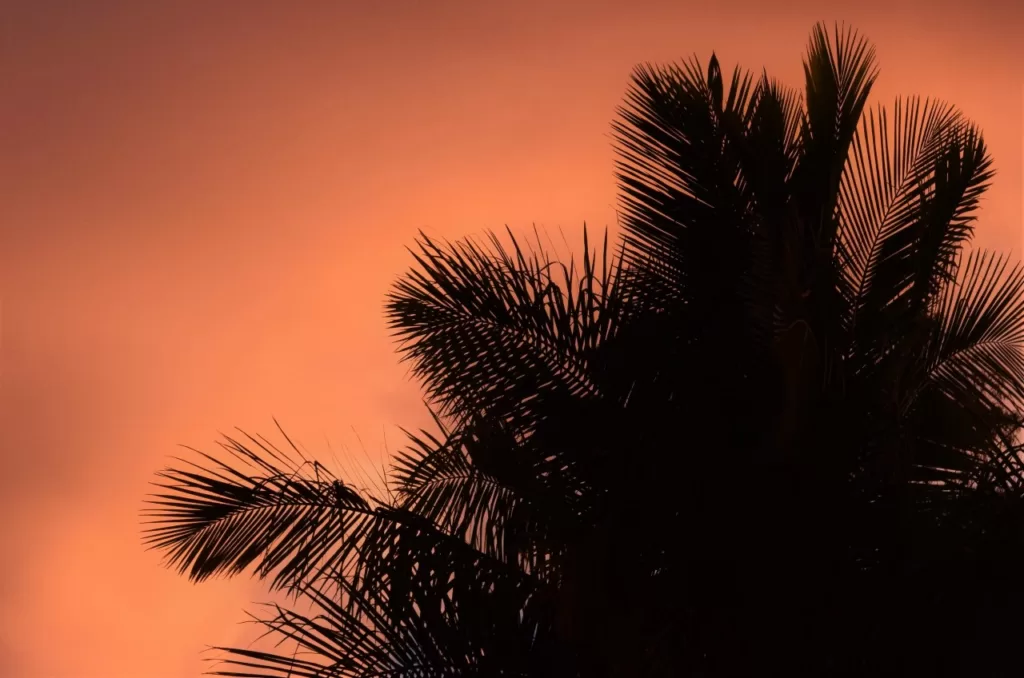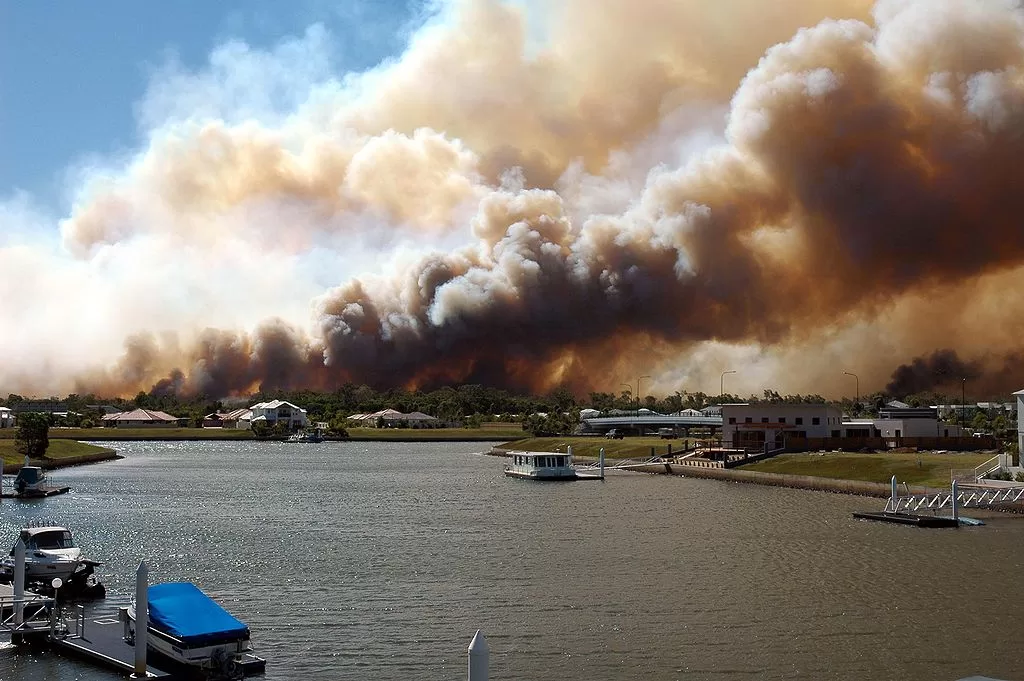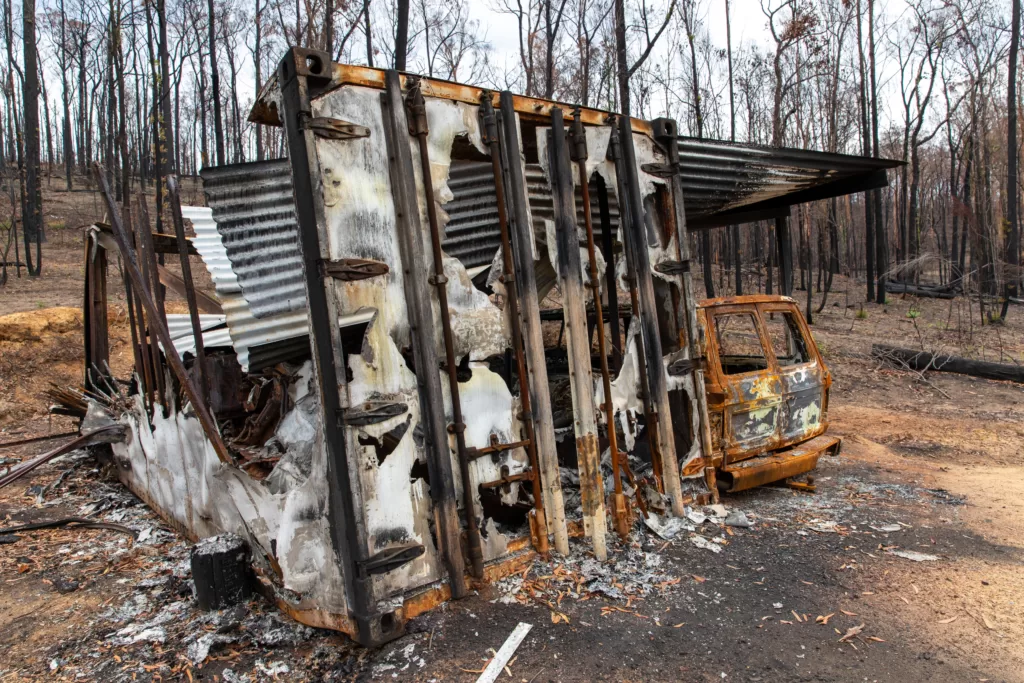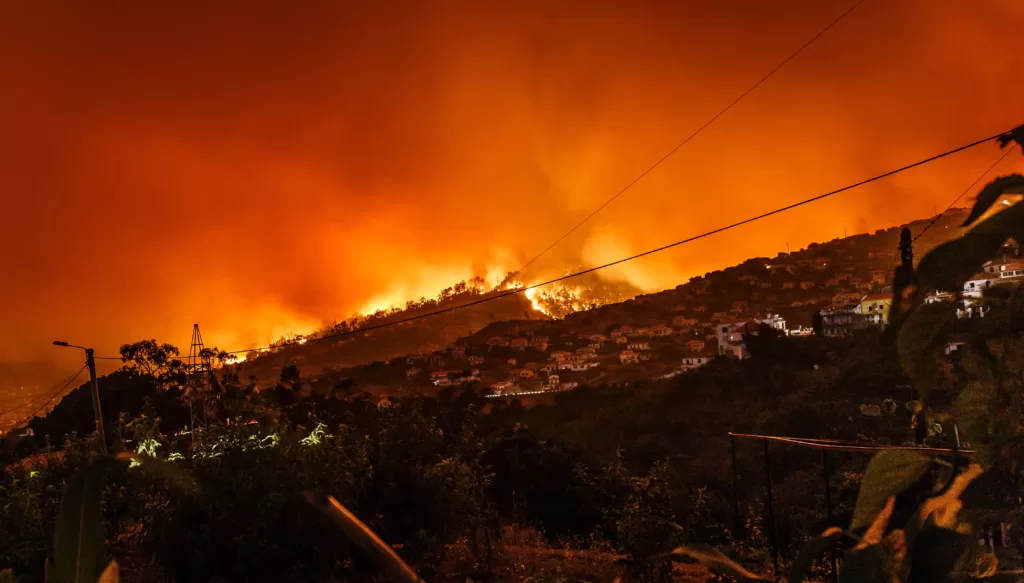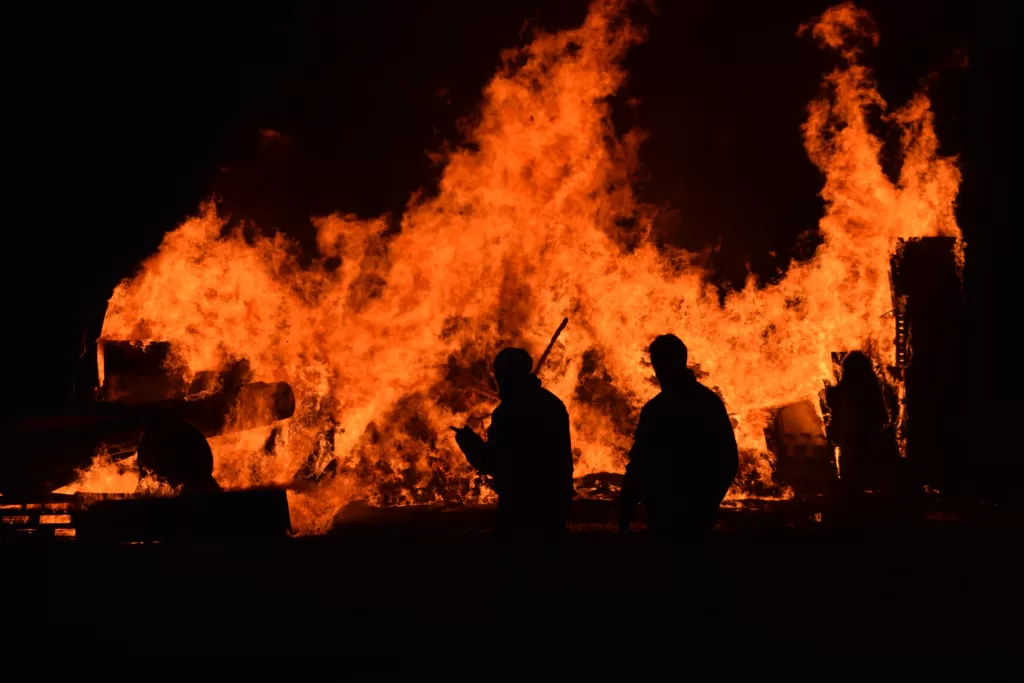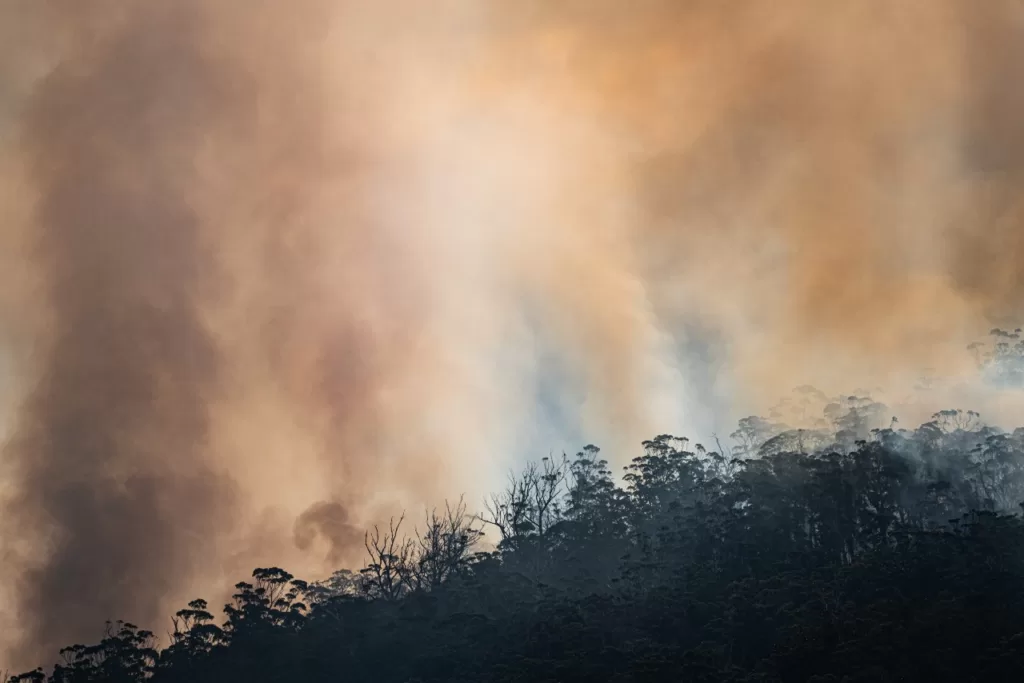Both historical and scientific records show an increase in the number of fires since the mid-1800s.
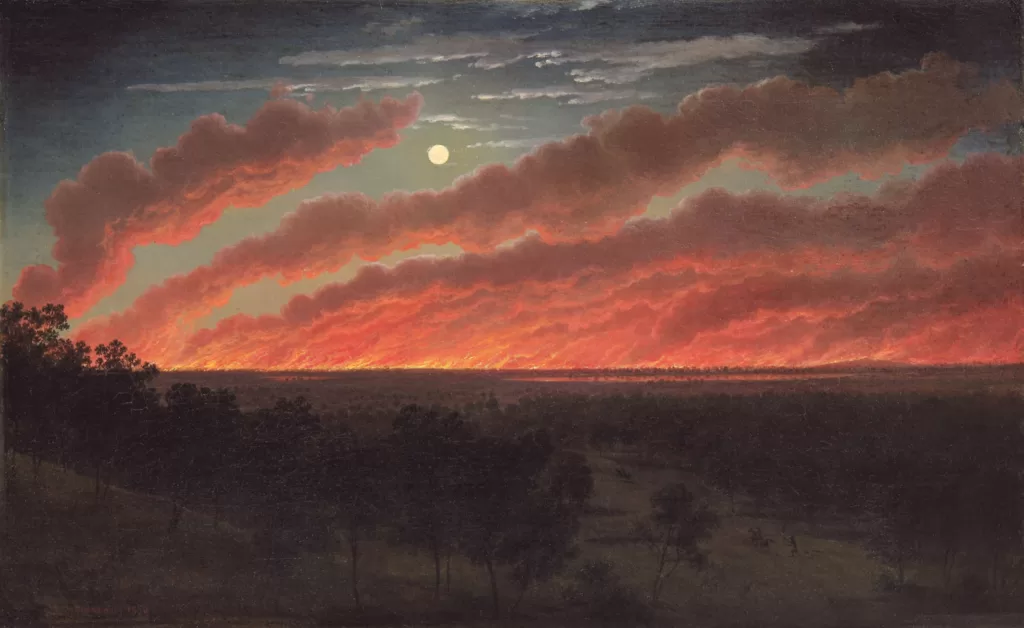 Bushfire between Mount Elephant and Timboon, 1857. : Eugene von Guérard Public domain
Bushfire between Mount Elephant and Timboon, 1857. : Eugene von Guérard Public domain
Both historical and scientific records show an increase in the number of fires since the mid-1800s.
Bushfires have increased in Australia’s southeast since the arrival of the British and the removal of Aboriginal care and management.
Importantly, this happened prior to the onset of climate change which is now making the situation worse, says biogeographer Professor Michael-Shawn Fletcher from the University of Melbourne.
One fundamental thing that needs to underpin all the solutions to this problem is engaging traditional owners, he says.
Transcript
Quotes attributed to biogeographer Professor Michael-Shawn Fletcher from the University of Melbourne.
“The 2019/2020 catastrophic bushfires that impacted an enormous area of southeast Australia. The narrative around these fires, that are actually increasing in time, is that they are an inherent feature of the Australian landscape. They’re something that we need to deal with and that are being exacerbated or made worse by climate change. And we really wanted to interrogate whether that was true or not.”
“The understanding that I have, both from my cultural background as a Wiradjuri person but also in my research with and for Aboriginal communities, is that landscapes and Country in Australia was very different prior to the British invasion and that it’s quite possible that these catastrophic fires have been made more frequent and more severe not only through climate change, but more deeply through the lack of care and management of Country.”
“There’s a whole bunch of different kinds of information we can glean views of the past from and what Country was like or what landscapes were like in Australia prior to the British invasion and the removal of Aboriginal care and management. There’s writings of settlers and farmers and colonists. There’s the paintings from realist painters such as Eugene von Guérard, whose paintings are considered so accurate that they’ve revegetated landscapes based on being able to identify species within his paintings.
“And there’s the empirical scientific data that I collect, which is essentially microscopic remains that are produced by plant communities and by fires and all of these kinds of processes that happen, get blown around in the atmosphere and they land on lakes and swamps and bogs and they settle and build up over years and years and years, and sometimes millions of years, much like an ice core but on land.”
“By piecing these various fragments together to build up a whole picture of how Country has changed, we know that there was a strong narrative that Australian landscapes, particularly in the southeast, were open. So we can glean from that that the landscape has changed a lot.”
“We’ve got sites ranging from Bundjalung country, which is a little south of Byron Bay, right through to Wadawurrung country, which is to the west of Melbourne in the southwest, and they are all from within contemporary forest ecosystems and they all show a significant increase in eucalyptus trees occurring immediately following the removal and suppression of Aboriginal care and management in the mid-1800s.”
“You see this increase in eucalypts and why that’s important is what we know is that eucalypts are incredibly flammable, they’re fast growing and flammable.”
“So this increase in eucalypts is associated almost uniformly once again, with an increase in charcoal, okay, the products of fire being deposited. Eucalypts increase and then fire increases and we see this as a uniform pattern right up the east coast of Australia and through the southeast. And really importantly, this happens prior to the onset of anthropogenic climate change.”
“And now we’re in this situation where we have overloaded forests that are not cared for or managed as they have been for millions, sorry thousands of years. We readily conserve or protect, but we don’t return the kind of care and management that these forests need and that keep them safe to live in.”
“The approach to looking after Country that dominates now, the conservation, the national park ideology, is based on a fundamental lie, which was that this landscape was uninhabited, was that Aboriginal people were intelligent parasites who had no discernible impact on the environment, all they did was happen to glean their vegetable and animal sustenance where it arose.”
“And this lie perpetuates. It stems from those early colonists’ ideas about Country. They would write these open landscapes, the splendour of these open landscapes, that we know ecologically if you leave them alone turn into forests. So the fact that they were open and grassland meant that there was some intervention happening.”
“So right at that foundation, the founding document that terra nullius is based on was unoccupied land, terra nullius so nobody’s land. And that myth and that lie is perpetuated right through to the present day.”
“In terms of solutions it’s multifaceted.”
“We need to address that deep, fundamental cultural schism that is perpetuating this problem, that is setting up things like, you know, our firefighters, they are incredible people. But the fundamental paradigm that you need a paramilitary organisation to fight fire in a landscape that is incredibly flammable and has been cared for and managed with fire for at least 60,000 years is one of the the systemic things, or at least representative of the systemic schism, the split between reality and where we’re existing today that exists in this continent.”
“And I see societies sitting now, you know, a very simplified spectrum between this narcissistic view that environments and the world is there for us, we take, take, take, take, take. You see this in mining sector, logging sector, all this that everything’s there for us. That has given rise to this misanthropic, the human-hating group. The antidote to that is to lock humans out and keep them out.”
“And it misses the whole appropriate engagement with Country and the very fundamental principle of healthy Country, healthy people that Aboriginal people, because we are a part of it.”
“We need to get inventive, you know. If we’re not happy with handing over the reins to Aboriginal people and letting them take control, and in many cases that’s not very possible because we’ve let these systems get so wild and so sick that converting them back to healthy Country with fire becomes too dangerous. So do we have to go in and intervene? Selective logging, follow up with some burning? There’s resistance to that, but let’s try it. Let’s try these different things. We have to get inventive. We’re in this moment of almost chaos or uncertainty and we have to start trying different things.”
“But the one fundamental thing that needs to underpin it all is engaging traditional owners.”
“This isn’t an us or them situation. We all live on this country now, on this continent and we all live on Country.”
“This is about empowering Aboriginal people to reconnect and bring their enormous reservoirs of knowledge to solve the wicked problems that we have now.”
Professor Michael-Shawn Fletcher is a biogeographer and Wiradjuri man whose research tracks the long-term interactions between humans, climate, disturbance and vegetation at local, regional and global scales. This research has been funded by the Australian Research Council.
Originally published under Creative Commons by 360info™.
Editors Note: In the story “Living with fire” sent at: 01/12/2023 16:58.
This is a corrected repeat.


